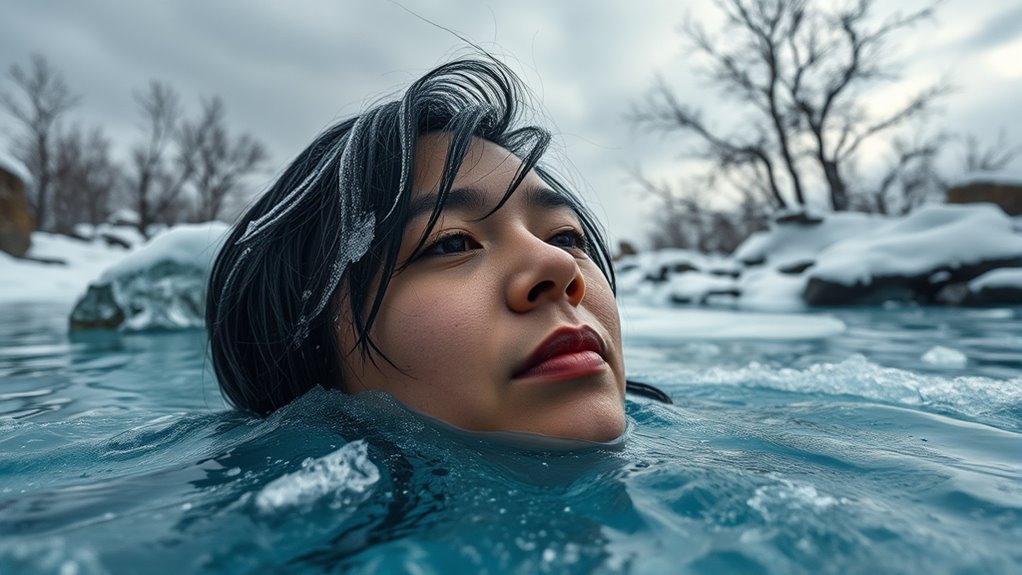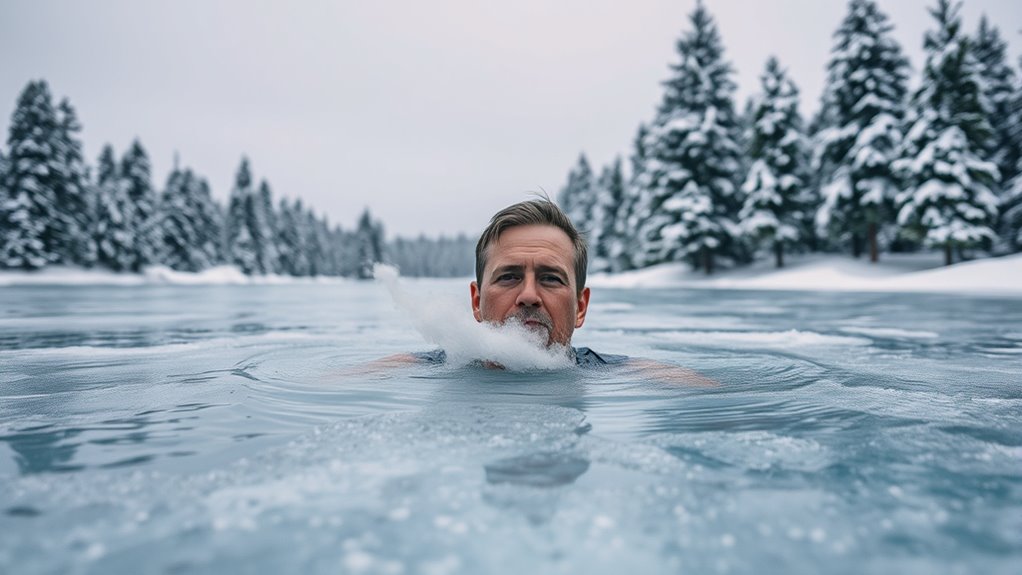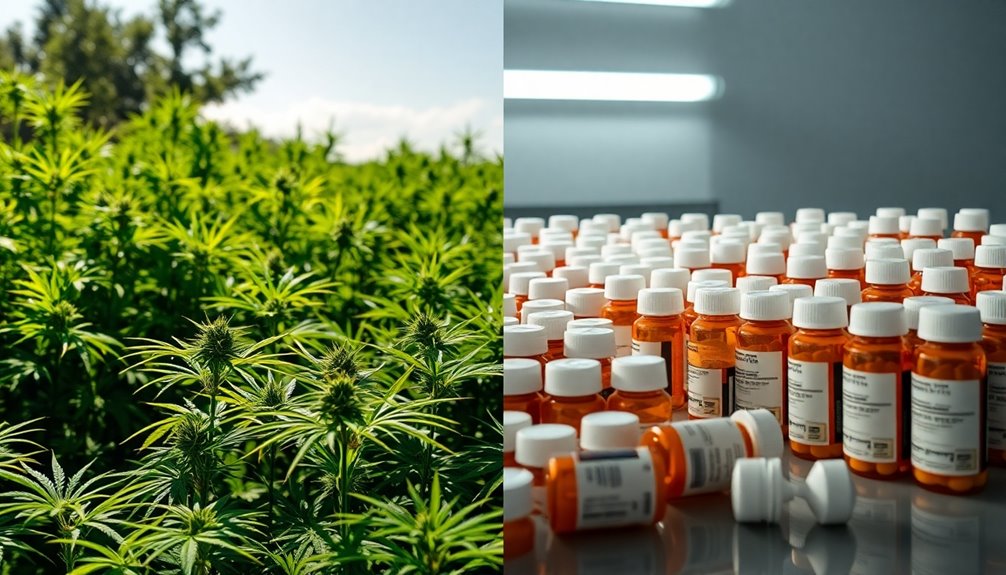Cold exposure therapy is now widely embraced, from Wim Hof’s innovative methods to mainstream medicine. It helps boost mental clarity, improve mood, and build resilience against stress by activating your body’s stress response. Physically, it speeds recovery, reduces inflammation, and promotes better circulation. It also enhances metabolic health and sleep. If you continue exploring, you’ll uncover how this powerful practice can transform your well-being safely and effectively.
Key Takeaways
- Wim Hof pioneered cold exposure techniques that leverage mental and physical benefits, now increasingly supported by scientific research.
- Cold exposure activates the nervous system, boosting resilience, mental clarity, and stress management, aligning with mainstream health practices.
- Regular cold therapy enhances circulation, reduces inflammation, and accelerates recovery, making it popular among athletes and wellness communities.
- Scientific studies validate cold exposure’s role in improving sleep, metabolism, and emotional stability, integrating into modern medicine.
- Safety and gradual adaptation are emphasized in both Wim Hof methods and clinical applications for effective, sustainable benefits.

Cold exposure therapy involves intentionally exposing your body to cold temperatures to promote health benefits. This practice has gained popularity through figures like Wim Hof, but it’s also making its way into mainstream medicine and wellness routines. One of the key reasons people turn to cold exposure is for its mental benefits. When you step into a cold environment, your body’s stress response is activated, releasing endorphins and norepinephrine. This surge can leave you feeling more alert, focused, and resilient against daily stressors. Many users report a sense of mental clarity and improved mood after regular cold exposure sessions. It’s like giving your mind a reboot, helping you manage anxiety and depression more effectively. Furthermore, cold exposure can enhance your athletic performance. When you expose your body to cold, it stimulates blood flow and improves circulation, which can speed up recovery after intense workouts. Cold immersion reduces inflammation and muscle soreness, enabling you to train harder and more frequently. Athletes often incorporate cold baths or ice packs into their routines for this reason. Cold exposure also trains your nervous system to better handle stress, which translates into increased mental toughness during competitions or demanding physical activities. Over time, this can boost your confidence and focus during high-pressure situations. Additionally, cold exposure encourages the activation of brown fat, a type of fat that burns calories to generate heat. This process not only supports weight management but also boosts energy levels, helping you stay more active throughout the day. The practice has been linked to improved sleep quality, which further enhances physical recovery and mental well-being. As you adapt to cold exposure, you’ll likely notice an increased ability to handle discomfort and stress, which can positively impact your overall resilience. The key is consistency—gradually increasing your exposure to cold helps your body adapt and maximizes these benefits. It’s not just about the initial shock; it’s about building a routine that your body learns to embrace. Whether you’re an athlete looking to optimize performance or someone seeking mental clarity, cold exposure can be a powerful tool. It’s accessible, cost-effective, and offers a range of benefits that extend beyond physical health, touching on mental resilience and emotional stability. Remember, safety is essential—start slow, listen to your body, and consult with a healthcare professional if you have any underlying conditions. With patience and persistence, cold exposure therapy can become a valuable part of your wellness journey, helping you access both mental and physical advantages that improve your overall quality of life.
Frequently Asked Questions
Can Cold Exposure Therapy Cure Chronic Illnesses?
You might wonder if cold exposure therapy can cure chronic illnesses. While it’s known to boost your immune system and trigger beneficial metabolic effects, it’s not a proven cure. Cold exposure can support overall health and help manage symptoms, but relying solely on it for chronic conditions isn’t advisable. Always consult healthcare professionals before incorporating cold therapy into your treatment plan, as it’s a complementary approach, not a cure-all.
What Are the Long-Term Risks of Cold Exposure?
You might think cold exposure is a miracle, but it’s not without dangers. Long-term risks include hypothermia, which can be life-threatening, and cold-induced injuries like frostbite. Constant exposure can weaken your immune system or damage tissues if not done carefully. Always listen to your body, limit exposure time, and seek professional guidance to avoid these serious risks that could turn your health journey into a nightmare.
How Does Cold Exposure Affect Mental Health?
Cold exposure can boost your mental health by improving mood and reducing stress. It promotes mental clarity and emotional resilience, helping you better handle daily challenges. Regular cold exposure releases endorphins, which lift your spirits, and can decrease anxiety levels. You might also find that it enhances your overall emotional stability, making you more resilient to life’s ups and downs. Embracing cold exposure could be a natural way to support your mental wellness.
Is Cold Exposure Safe for Children and Elderly?
Did you know that only 2% of cold exposure studies include children or the elderly? Safety concerns and age restrictions are vital here. You should be cautious, as cold exposure can cause hypothermia or heart issues in vulnerable groups. For kids and seniors, it’s best to consult a healthcare professional first, ensuring any cold therapy is safe and appropriate for their age and health status.
How Does Cold Exposure Compare to Other Wellness Practices?
You might wonder how cold exposure stacks up against other wellness practices. It promotes cold adaptation, enhancing your body’s ability to regulate temperature through improved thermal regulation. Unlike some practices, cold exposure can boost immunity and mental clarity quickly, but it requires caution. When compared to activities like meditation or exercise, it offers a unique physical challenge that strengthens your body’s resilience, making it a valuable addition to your wellness routine.
Conclusion
As you delve into cold exposure therapy, remember it’s like steering your own ship through icy waters—challenging yet invigorating. From Wim Hof’s bold methods to mainstream medicine’s cautious embrace, this practice is gaining ground as a powerful tool for health. Embrace the chill and unleash your body’s hidden potential, for sometimes, it’s in the cold that you find your hottest breakthroughs. Ready to take the plunge? The icy horizon is calling.











